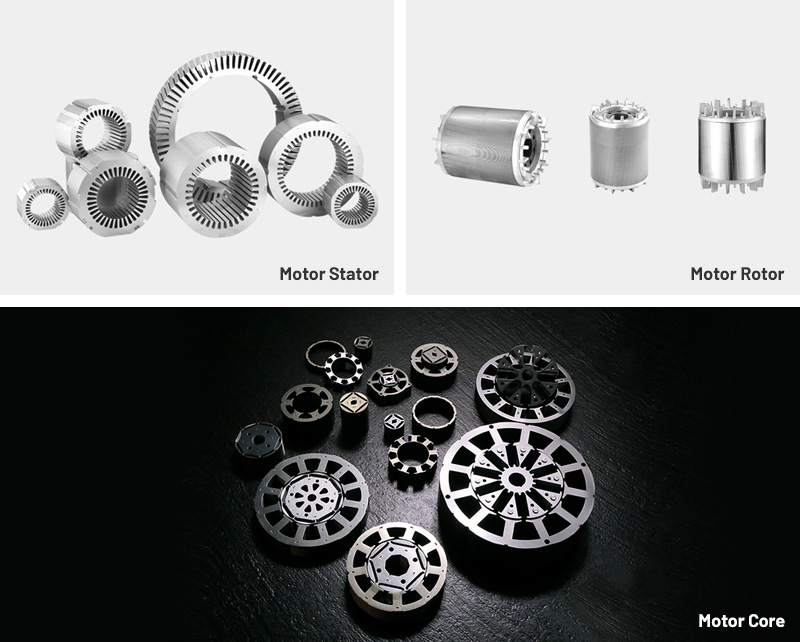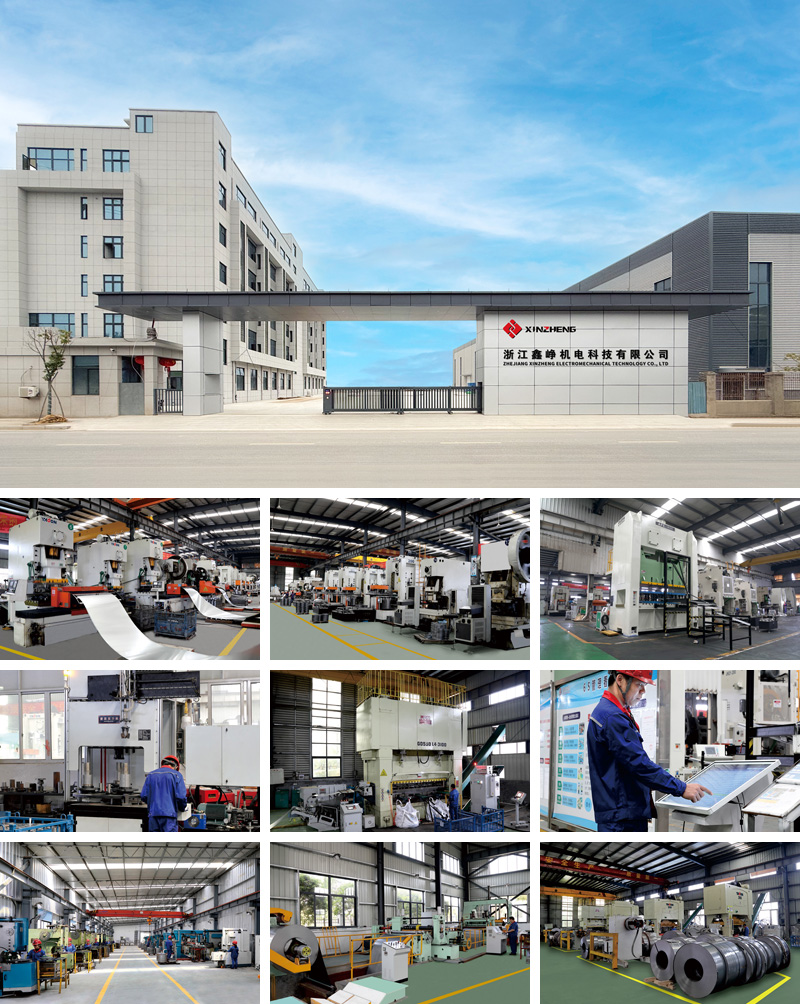Energy-efficient motors have become a central focus across global machinery, automation, and industrial equipment sectors. With the steady tightening of efficiency regulations in Europe and North America, motor manufacturers are under pressure to design systems that minimize losses while maintaining mechanical reliability under continuous or heavy-duty operation. Within this context, high permeability Y3 motor laminations have emerged as a critical enabling component for the next generation of induction motors.
The Y3 motor platform is widely adopted in industrial equipment due to its durability, stable torque output, and adaptability across various load conditions. As industries shift to higher-efficiency motor classes and lower lifecycle energy consumption, the magnetic performance of the stator and rotor cores becomes increasingly important. High-permeability electrical steel laminations address this demand by improving flux conduction, lowering iron losses, and supporting consistent electromagnetic behavior throughout the motor’s operating range.
High permeability laminations are thin sheets of electrical steel designed to optimize magnetic flux pathways in induction motors. Their purpose is to increase magnetic responsiveness while reducing hysteresis and eddy-current losses. When applied to Y3 motors, these laminations enable a more efficient electromagnetic circuit, improving both torque density and operating stability.
Three technical principles are central to this material category:
Magnetic permeability measures how easily a material allows magnetic flux to pass through it. Higher permeability means less energy is required to magnetize the material, allowing the motor to operate with reduced core losses and improved efficiency.
Electrical steel used for high permeability laminations typically contains a controlled silicon content. Silicon reduces eddy-current losses and stabilizes crystal structure, resulting in more predictable magnetic performance. In Y3 motors, this contributes to lower heating and more consistent torque output.
Each lamination includes a thin, inorganic or organic insulation layer. This prevents electrical connectivity between lamination sheets, reducing circulating currents and mitigating heat buildup. Uniform coating thickness is critical for both stacking quality and long-term electrical performance.
These principles create the foundation for laminations that enable higher motor efficiency without substantially changing the mechanical design of the Y3 motor.
The performance of high permeability Y3 motor laminations depends on the interplay between material quality, geometric design, and processing methods. Key characteristics include:
The geometry of Y3 laminations is designed to support stable magnetic flux distribution. Precision-cut slots, ventilation ducts, and core shapes influence flux density, torque ripple, and thermal behavior. Any deviation from design tolerances can lead to higher losses or mechanical vibration.
Typical materials include cold-rolled, grain-oriented or non-oriented electrical steel with enhanced permeability properties. The steel grade determines:
Saturation flux density
Core loss distribution
Magnetostriction behavior
Thermal resistance
For Y3 motors, non-oriented electrical steel is commonly selected for its isotropic magnetic response, which is essential for rotating machines.
To ensure efficient lamination stacking and electrical insulation, several coating types may be used, including:
C-5 inorganic coatings
Hybrid organic-inorganic coatings
High-temperature insulation layers
These coatings prevent interlayer eddy-currents and offer additional benefits such as corrosion resistance and mechanical durability.
High permeability Y3 motor laminations rely on advanced stamping and punching technologies. Key processes include:
High-precision progressive die punching
Laser cutting for prototype or low-volume production
Automated stacking and interlocking techniques
Stress-relief heat treatment (when required by steel type)
The manufacturing technique directly affects burr height, dimensional precision, and mechanical stress in the steel, all of which influence magnetic performance.
Several engineering factors determine the long-term reliability and efficiency of high permeability Y3 motor laminations:
Excessive burr height increases the risk of short circuits between laminations and negatively affects stacking density. Low burr levels are essential for consistent insulation and predictable magnetic behavior.
Tight tolerances ensure consistent air-gap geometry and stable torque output. Even slight deviations can introduce unwanted vibration and energy loss.
Coating defects or uneven thickness disrupt electrical isolation between lamination layers, increasing eddy-current losses. High-quality coating processes significantly improve long-term efficiency.
Variations in steel composition impact permeability, core losses, and thermal behavior. Reliable suppliers typically offer steel with strict batch-to-batch stability.
Improper stacking pressure, misalignment, or contamination during assembly can degrade magnetic flux pathways. Automated stacking is generally preferred for performance-critical motors.
For manufacturers sourcing laminations for Y3 motors, the stability of the supply chain and technical capability of suppliers are essential. When evaluating a supplier, engineering teams typically consider:
Suppliers should provide certifications and traceability records for electrical steel grades, coating systems, and heat-treatment processes.
Precision tooling is essential for consistent part dimensions. Progressive dies with micro-clearance control often deliver the best repeatability.
Key QC checkpoints include:
Dimensional inspection
Burr height measurement
Coating uniformity testing
Stacking factor verification
Suppliers with in-house metallurgical laboratories often provide better performance consistency.
Demand for Y3 motor components can fluctuate based on industrial cycles. Suppliers must maintain capacity for both large-volume orders and specialized, low-volume production.
High permeability laminations should help manufacturers meet IE3, IE4, or regional efficiency requirements. Suppliers familiar with global regulations offer strategic value.
Motor manufacturers frequently encounter challenges related to lamination quality and performance. Typical pain points include:
Inconsistent magnetic properties due to variable steel batches
Coating breakdown during forming or assembly
Higher-than-expected core losses after stacking
Dimensional distortion caused by mechanical stress
Difficulty sourcing high-performance grades during peak demand cycles
Addressing these issues requires robust supplier partnerships, process control, and material expertise.
High permeability Y3 motor laminations are used in a broad range of industrial applications that demand reliable performance and efficient energy usage. Key sectors include:
Pumps and water-treatment equipment
Industrial compressors
HVAC and ventilation systems
Conveying machinery
Manufacturing automation systems
Agricultural and processing equipment
In each case, improved magnetic permeability contributes to reduced heating, lower power consumption, and longer service intervals.
Several trends are shaping the future of motor lamination technology:
Manufacturers increasingly adopt thinner laminations and steel grades with improved magnetic domain control to further reduce iron losses.
New coatings offer higher thermal stability, lower thickness, and better corrosion resistance, improving motor longevity in harsh environments.
Laser-based measurement systems and automated die monitoring help maintain tighter tolerances and enhance repeatability.
As IE4 and IE5 motor classes become more common, high permeability laminations will play an even more central role in achieving regulatory compliance.
Environmental regulations are encouraging steel producers to develop more eco-friendly production routes and recycling programs for lamination scrap.
1. Why are high permeability Y3 motor laminations important?
They improve magnetic flux conduction, reduce iron losses, and support higher-efficiency motor operation.
2. What steel grades are used?
Cold-rolled, non-oriented electrical steel with enhanced permeability is typically selected for rotating machinery.
3. How does burr height affect performance?
High burr levels increase eddy-current pathways and reduce insulation effectiveness, leading to higher losses.
4. Are these laminations suitable for high-duty motors?
Yes. Their magnetic stability and thermal behavior make them suitable for demanding industrial environments.
High permeability Y3 motor laminations play a vital role in enabling modern induction motors to meet increasingly strict efficiency and reliability requirements. Their performance depends on a combination of advanced electrical steel, precise manufacturing, and consistent quality control. As industrial technologies continue to evolve, laminations with higher permeability, lower losses, and improved coating systems will help manufacturers meet future energy-efficiency and sustainability demands.
Product Category

Comprehensive Strength


Copyright © Zhejiang Xinzheng Electromechanical Technology Co., Ltd. All Rights Reserved.
This website uses cookies to ensure you get the best experience on our website.